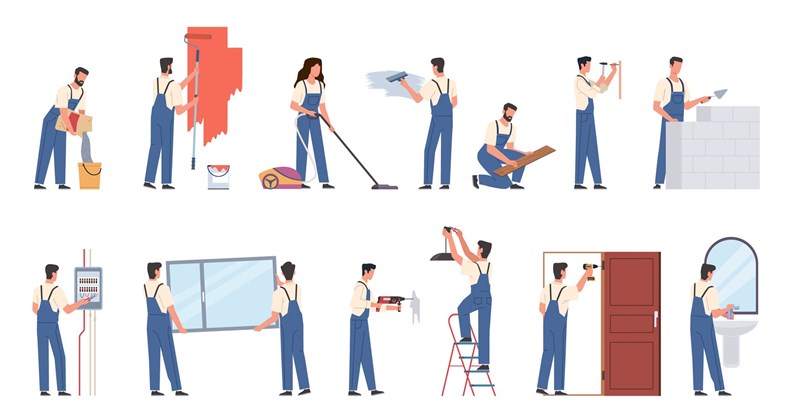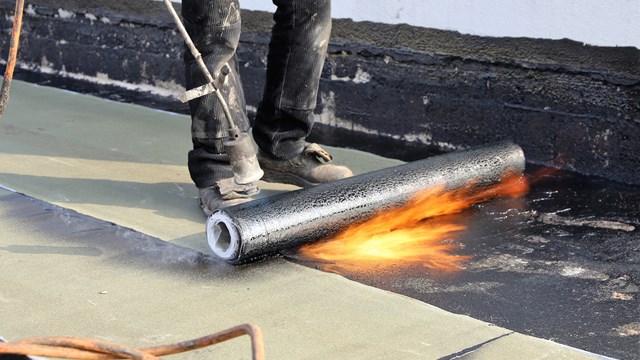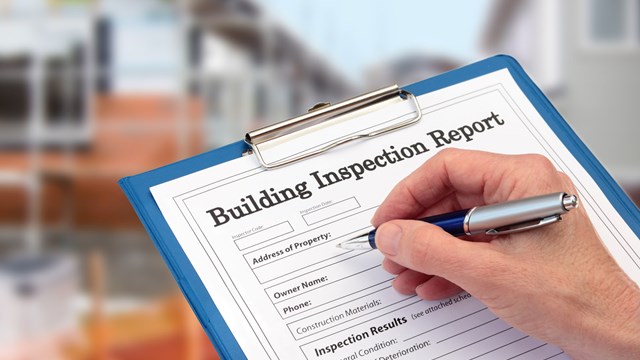Capital projects like major facade work, window replacements, and essential system overhauls can significantly disrupt daily life for the people who call a co-op or condo building home. Engineers, general contractors, and construction companies need to carefully consider the impact of noise, dust, and the need to temporarily relocate or work around common areas while doing this type of work. They collaborate with managers and boards to make sure projects go according to plan, and to minimize disruptions as much as possible.
As Kevin Hilberg of New Jersey-based Hilberg Contracting points out, with a major capital project, “you’re dealing with a community as a whole in residential co-ops and condos, so there’s a lot of involvement and coordination that needs to take place to make sure everyone is on the same page.”
Scott Zimmerman of O&S Associates, a nationwide engineering and architectural firm, agrees, saying “you have to remember you are working in occupied buildings. The first step is to do inspections, and after that, develop a plan to ensure the project has a low impact and is completed quickly.”
Getting a plan in place before the first hammer falls, and using it to help stay on track is essential—as is communicating that plan to the people most likely to be impacted by it. According to Hilberg, notifying residents so everyone knows about an upcoming project will help reduce disturbances, because it removes the element of surprise. “It’s helpful for everyone to be aligned and to know what’s going on during a major renovation or repair,” he says.
The timeline acts as a guide for everyone to work together cohesively, setting deadlines and making sure there’s room for any unexpected challenges that may arise. “You’re dealing with multiple parties, and need to be ready for anything that could happen, so you plan it out as best you can and give yourself some extra time from the start,” says Hilberg.
“Preconstruction meetings are mandatory, and you can use them to develop your game plan, which can help prevent any issues,” he continues. “Then, it’s time to send out your notices. Once you have your plan in place and the job ready to go, you can contact the building managers so they can notify their community.” Often, building managers know the best way to notify residents in their building, no matter the medium.
Hilberg adds that getting everything ready in the beginning is just as important as executing the job itself.
Everyone needs to be on the same page and observant at all points during a big project so if anything off-plan occurs, everyone can react quickly and appropriately, says Matt Herceg of Becht Engineering. “It’s a common-sense focus that might not be on everyone’s minds, especially if they don’t have extensive construction experience.”
Making & Staying Within a Budget
Setting a budget for a large capital project can be a time consuming endeavor. Contractors often need to inspect the building closely to determine its exact needs, as many irregularities are not immediately visible. For example, if a contractor finds deteriorating brick on a facade, rather than just accumulated grime, that may require more work to patch or repair.
“We do inspections to determine what needs to be done as best as possible, but sometimes you don’t fully know what you’re dealing with until you get into a project,” says Zimmerman. “Once you get eyes on everything, you can decide if it just requires a fix, or if it’s going to turn into a much bigger project.” Contractors need to be prepared to adjust as the project progresses.
Performing regular building inspections not only helps identify structural problems earlier, it also helps boards and residents alike budget by identifying standard maintenance needs, and by allowing residents time to financially prepare for future large scale projects and repairs. “It’s just better for the building overall if owners are proactive in terms of maintenance,” Zimmerman notes.
Keeping Up With Codes
Safety is the main priority during any building project, and is arguably the most important part of any project plan, as it involves everyone on site and is everyone’s responsibility. According to Hilberg, “You try to set all your safety measures in place, and go through your daily checklist to minimize any issues. If you need to close off areas for safety, you fence those off and designate the work area so no one is in any danger.”
Personal safety also includes making sure the work area is secure and safe, with any loose materials, equipment or other gear put away, battened down, and secured. “You don’t want pieces of the building falling off and endangering people,” says Zimmerman.
“Structural safety is key to ensuring the project runs smoothly and is safe. You need to make sure the building is safe. We recommend involving a consultant or engineer to meet general structural safety needs,” says Jason Damiano of Manhattan-based RAND Engineering.
Different cities follow different codes. As Zimmerman points out, “New York is very specific with facade codes. They don’t allow drones for inspections, because the wind can throw the drones off course. So here you need certified, licensed people to hang off the building [and inspect by sight] which can be better, because then you have real eyes on the building. While you’re up there you can also take samples from across the facade and see up close what’s happening.”
Damiano further explains that “In NYC, we have a relatively new Tenant Protection Plan designed to protect tenants during construction or renovation projects. Contractors must submit a comprehensive plan covering egress, fire safety, health requirements, structural safety, noise restrictions, and services—submitted to the Department of Buildings (DOB) before a permit is issued. There is a weekly inspection of the worksite and areas of the building to ensure compliance with the Tenant Protection Plan.”
Zimmerman adds that “To avoid surprises, you need to perform regular inspections. In New York, Local Law 11 requires a facade inspection every five years.”
“Contractors must keep insurance on file with the NYC Department of Buildings, which won’t issue a permit unless specific insurance requirements are met,” adds Damiano.
Russ Fernandes, principal at Becht Engineering, says, “Worker safety is essential. Over the years, we’ve seen an increase in OSHA involvement to help ensure secure work sites. It’s vitally important that contractors follow OSHA protocols designed to protect everyone during a project.”
A clear initial plan, along with following inspections and a timeline that allows for necessary adjustments, minimizes day-to-day disruptions. Proper budgeting, open communication, and a commitment to safety standards can help lessen inconveniences on shareholders and make way for managers, board members, and contractors to share in a major project’s success.
Kate Mattiace is Associate Editor of CooperatorNews.










Leave a Comment